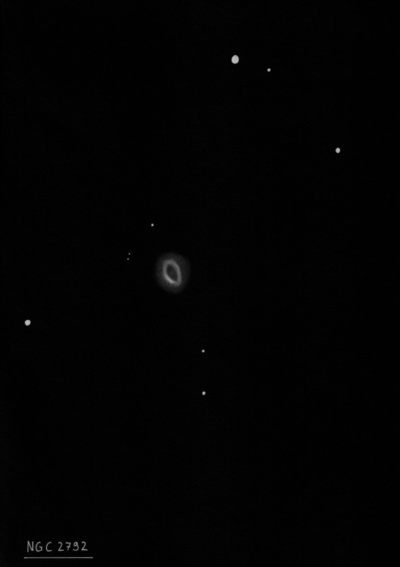
John Herschel discovered NGC 2792 = h3149 on 2 Mar 1835 while observing with Thomas Maclear and another guest. He recorded, "pF, exactly round, equal to a star 9th mag, but of a dull light. At first I was inclined to think it double, but with 320 it exhibited a uniform round disc; nor did a friend to whom I showed it see any division. Stars to-night perfectly well defined. In a field with leading stars, or which a diagram was made." On 7 Feb 1837 (his third observation of the planetary), he noted "Viewed past meridian. It occurs in a field with about 40 stars. Diameter 4" or 5" at the utmost; 10" is too large certainly. Very like that of sweep 771 [NGC 2452]. But now the night is good and it bears magnifying. With 320 power the disc is dilated into a dim hazy round nebula; yet there is a peculiarity in its appearance which completely separates it from all nebulae of the same size. A very remarkable object."
Robert Innes, observing on 16 Mar 1917 with the 9-inch refractor at the Union Observatory in Johannesburg, described NGC 2792 as "an 11th magnitude planetary about 20" in diameter. Is north preceding a pair of 10.5 mag stars. No stars within 3'."
300/350mm - 13.1" (4/10/86): moderately bright planetary, small, round, no central star. A pair of mag 11 stars at 36" separation is located 4' SE. Very far southern object for observation from Northern California.
600/800mm - 24" (4/4/08 - Magellan Observatory, Australia): at 350x this high surface brightness planetary appeared very bright, small, round, 15"-20" in diameter. It appeared annular with a brighter rim, although the the inner edge of the annulus was not well defined. A wide pair of mag 11 stars lies 4' SE. Located 13' SW of mag 6.3 HD 79524.
Notes by Steve Gottlieb